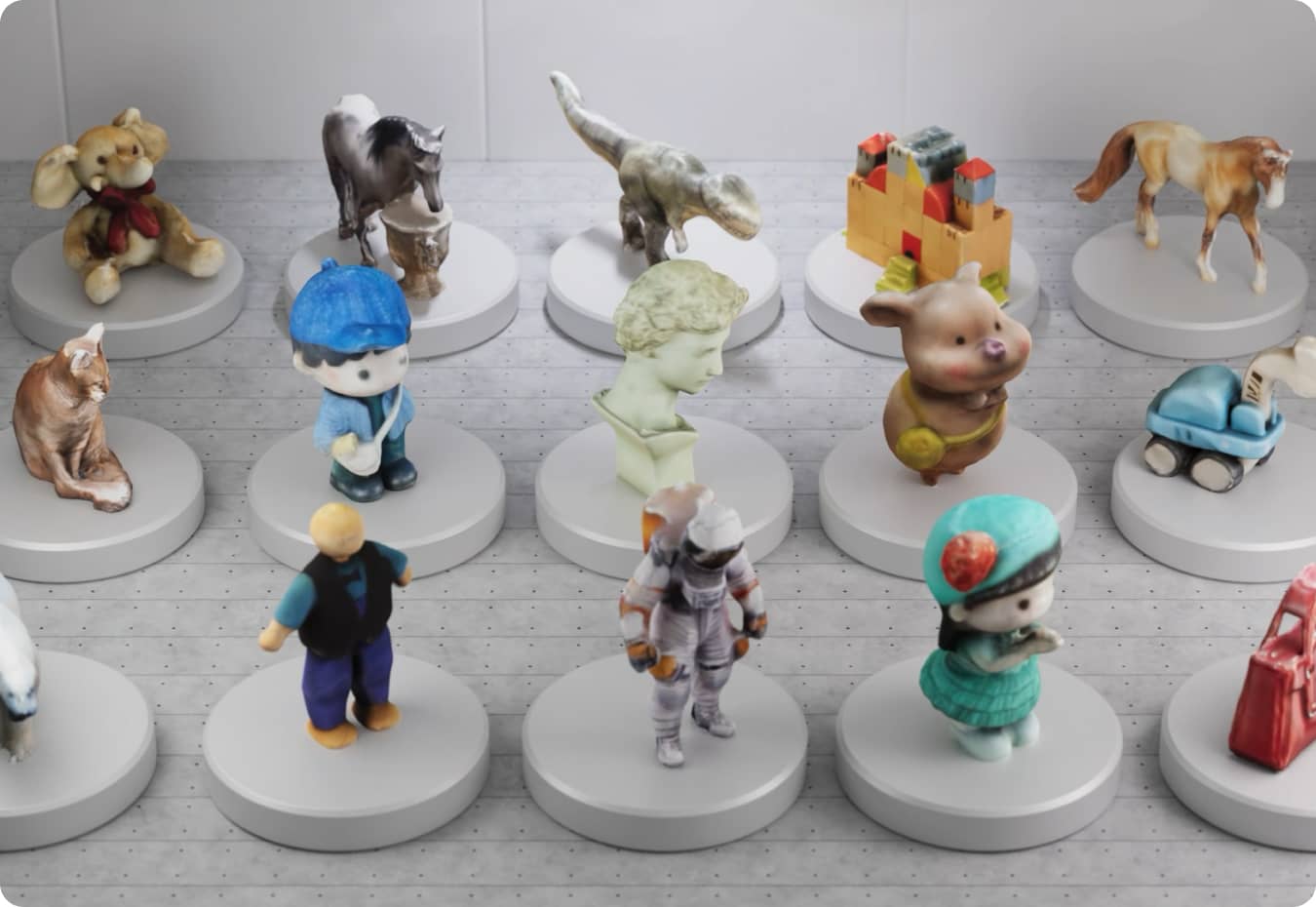Mar 21, 2024
Subscription
|
Paper
Paper Details
Author(s):
Vikram Voleti , Chun-Han Yao , Mark Boss , Adam Letts , David Pankratz , Dmitry Tochilkin , Christian Laforte , Robin Rombach , Varun Jampani
Publishing Date:
Table of Contents
1. What is it?
Stable Video 3D (SV3D) is a novel multi-view synthesis and 3D generation technique that leverages latent video diffusion models to produce consistent, high-quality multi-view images from a single image of an object. SV3D can generate multiple novel views of an object with explicit camera pose conditioning, making it suitable for various applications such as game design, AR/VR, e-commerce, and robotics.
2. How does this technology work?
SV3D is based on repurposing a latent video diffusion model (Stable Video Diffusion - SVD) to generate multiple novel views of an object with explicit camera pose conditioning. The video diffusion model demonstrates excellent multi-view consistency and generalization capabilities, making it ideal for NVS followed by 3D generation. SV3D also uses a coarse-to-fine optimization technique to generate high-quality 3D meshes directly from the SV3D novel view images.
3. How can it be used?
SV3D can be used in various applications, including:
Game design and development: To create realistic game environments with smooth transitions between camera views.
Augmented Reality (AR) and Virtual Reality (VR): To generate consistent, high-quality multi-view images for immersive experiences.
E-commerce: To provide customers with interactive 3D product visualizations, improving their shopping experience.
Robotics: To enable robots to better understand their surroundings by generating multiple novel views of objects in real time.
4. Key Takeaways
Stable Video 3D is a novel multi-view synthesis and 3D generation technique that leverages latent video diffusion models for high-resolution, image-to-multi-view generation.
The technology offers better generalization, controllability, and multi-view consistency compared to existing NVS methods.
Stable Video 3D can be used in various applications such as game design, AR/VR, e-commerce, and robotics.
The technique utilizes a coarse-to-fine optimization approach to generate high-quality 3D meshes from the generated multi-view images.
5. Glossary
Latent Video Diffusion Models: AI models trained on large-scale image and video data can generate smooth and consistent videos.
Novel View Synthesis (NVS): The process of creating new views of a scene or object from existing views.
3D Generation: The process of creating realistic 3D representations of objects or scenes from images or videos.
Multi-view Consistency: The ability of an NVS method to generate consistent visualizations across multiple viewpoints.
6. FAQs
a. How does Stable Video 3D compare to other NVS methods?
Stable Video 3D offers better generalization, controllability, and multi-view consistency compared to existing NVS methods that repurpose image diffusion models for novel view synthesis.
b. Can Stable Video 3D be used for real-world objects?
While Stable Video 3D was initially developed for synthetic 3D objects, it can be extended to real-world objects by incorporating appropriate training data and camera calibration techniques.
c. What is the computational cost of generating a 3D mesh using SV3D?
The computational cost depends on the size and complexity of the object being generated and the hardware specifications used for rendering. However, SV3D can generate high-quality 3D meshes directly from the generated multi-view images, reducing the need for additional optimization steps.
Disclaimer:
This text has been generated by an AI model, but originally researched, organized, and structured by a human author. The grammar and writing is enhanced by the use of AI.
